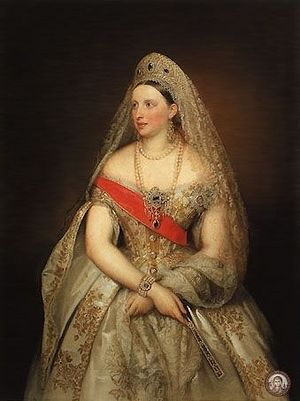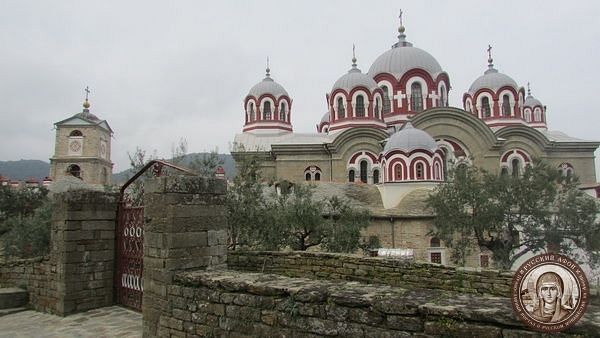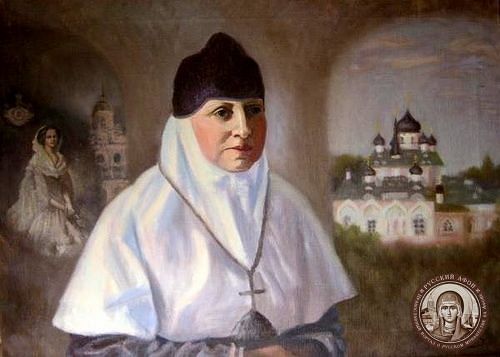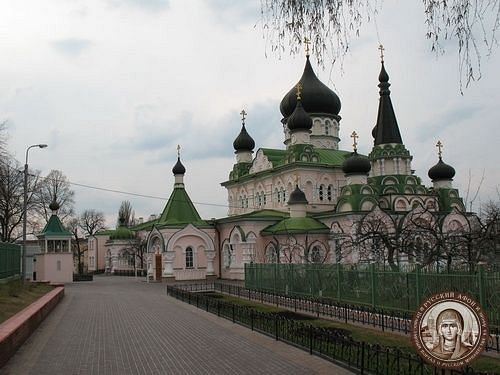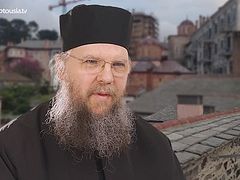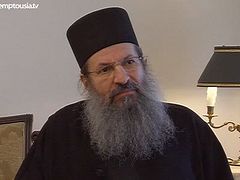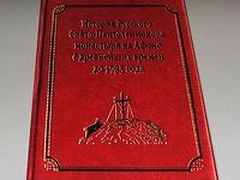St. Anastasia of Kiev, a Russian Grand Duchess and later a nun, is liturgically commemorated every year on Bright Thursday, and today, April 13, is the anniversary of her blessed repose.
On Thursday of Bright Week, the Orthodox Church honors the memory of St. Anastasia of Kiev. Despite the centuries-old ban on women being on the Holy Mountain, this saint was directly related to the laying of the first stone on the Holy Mountain in 1881 in the foundation of the cathedral of St. Elijah Skete, founded in 1757 by St. Paisius Velichkovsky.
St. Anastasia (Grand Duchess Alexandra Petrovna Romanova in the world; Alexandra Frederica Wilhelmina before Orthodox Baptism) was born on May 2, 1838 in St. Petersburg. She was the daughter of Prince Peter George of Oldenburg, a famous philanthropist, and Princess Therese of Nassau. She was also the great granddaughter of Emperor Paul I and the wife of Grand Duke Nicholai Nikolaevich, the son of Emperor Nicholas I.
Having inherited her father’s convictions, she was helping poor and sick children already in her youth. She converted to Orthodoxy on January 25, 1856 with the name Alexandra and was married to Grand Duke Nicholai Nikolaevich Romanov, the brother of Emperor Alexander II. The couple had children—Grand Dukes Nicholai and Peter. The Grand Duchess founded the Holy Protection community of the Sisters of Mercy, a hospital, an outpatient clinic, a department for orphaned girls, a medical college, and other charitable institutions in St. Petersburg. Until 1881, she was the Chairman of the Council of Children’s Shelters of the Department of Institutions of Empress Maria Feodorovna, which was headed by the Prince of Oldenburg. Thanks to the support of the Grand Duchess, a fund was created, from which twenty-three shelters for 5,000 orphans were supported. During the Russo-Turkish War, she organized a sanitary detachment with her own funds.
In 1879, the Grand Duchess, suffering from breast cancer, went abroad for treatment, and in 1880 she moved to Kiev.
In June 1881, Alexandra Petrovna made a pilgrimage to the holy places of Greece on a boat, accompanied by Rear Admiral Golovochev, making a stop off the coast of Holy Mount Athos. The Grand Duchess could not visit the “portion of the Mother of God” because women are forbidden to visit this holy place, but she could contemplate the magnificence of the Athonite monasteries from onboard the boat, remaining 1,600 feet of the shore of Mt. Athos. There, on the ship, she was visited by Athonite elders, whose conversation brought her comfort and strengthened her spiritual powers. The brothers of the Russian St. Elijah Skete on the Holy Mountain appealed to Alexandra Petrovna with the intercession and participation of Elder Makary (Sushkin), the abbot of the Russian St. Panteleimon’s Monastery, with a request to lay the first stone in the foundation of the cathedral that was planned to be built on the site of the previous cathedral, which had suffered from an earthquake.
“The Grand Duchess graciously agreed to this, and on June 22 she sent a stone with a decorative inscription, instructing Rear Admiral Golovochev, who accompanied her, to lay the foundation of the cathedral on her behalf. Thus, with the help of God, the laying of the foundation of the cathedral was accomplished. The cathedral had two altars: the main altar in the name of the Prophet Elijah, and the side altar in the name of the holy Martyr Queen Alexandra. Leaving the shore of Mt. Athos, Her Imperial Highness desired to see the skete. The steamer stopped across from it. The abbot and the brethren hastened to the steamer, bringing with them the skete’s main sacred object—the wonderworking Lactating Mother of God Icon, and holy relics—the foot of the holy Apostle Andrew the First-Called. Her Highness reverently venerated the holy objects and then left the Athonite shore, being bade farewell by the fervent prayers and good wishes of the Russian inhabitants of the Holy Mountain.”
Her stay off the coast of the Holy Mountain and her communication with Elder Makary (Sushkin) and the other Athonite ascetics fundamentally influenced the entire rest of the Grand Duchess’ life. From that time on, she kept up a correspondence with Elder Makary and other Athonite elders, asking their advice and blessing on various issues.
Soon after visiting Athos, she founded Kiev’s Pokrov Convent in 1889, where she resettled. There the Grand Duchess, confined to her bed for many long years, received miraculous healing and began to walk.
After the death of her husband on April 13, 1891, she secretly received the monastic tonsure with the name Anastasia. At Pokrov Monastery she opened a modern hospital for the poor with the only x-ray department in Kiev, arranged a free pharmacy, school, and shelter for orphaned girls, and shelters for terminally ill women and for the blind. The harsh life of the sisters of the monastery, organized according to the old Studite Typikon, was full of hardships, and passed with prayer and labors. Despite this, the number of those desiring to enter the monastery in the first year reached 400, although the monastery could only tonsure 150 nuns at that time.
St. Anastasia was a strict faster and lived in a simple cell, giving away all her funds for the support of the institutions founded by her. She performed the duties of an assistant surgeon in operations, supervised the hospital routine, the nutrition and spiritual life of the sick, and preparations for operations, kept vigil at the beds of those being operated on, and supported the spirit of the sick. In 1897, she forestalled a typhus epidemic in Kiev by organizing several specialized hospitals. Until 1894, when her state of health began to deteriorate and she herself needed surgery, she was at all of the monastery services, herself reading the Six Psalms, the Hours, and the Canon.
Pokrov Monastery had missionary and educational significance: There were book and icon stores, and they produced large quantities of religious-moral leaflets, and the sectarians housed in the monastery would return to Orthodoxy after some time thanks to the mild treatment given them and conversations with St. Anastasia.
In 1894, the converted Mezhigorsky Transfiguration of the Lord Monastery was joined to the Pokrov Monastery. In 1896, during the visit of Emperor Nicholas II and Empress Alexandra Feodorovna, the foundation of a cathedral in honor of St. Nicholas was laid in Pokrov Monastery, as a project of Grand Duke Peter Nikolaevich. A new hospital building was opened and improved medical equipment was purchased in 1897-1898 with funds donated by the emperor.

St. Anastasia reposed in Kiev on April 13, 1900, after severe sufferings on Bright Tuesday. Before death she willed to be buried “under the open sky, in a simple pine coffin… Please bury me without any worldly glory or vanity, and without any wreaths or flowers… Over my tomb I ask you to place a very small and inexpensive stone cross, with the icon of the Heavenly Queen that I received at Holy Mount Athos—the work of Hierodeacon Lukian—embedded into it. On the cross write the inscription, ‘Here lie the remains of the servant of God Alexandra…”

St. Anastasia was glorified as a venerable monastic on November 24, 2009, by decision of the Holy Synod of the Ukrainian Orthodox Church. Her memory is celebrated on October 20/November 2, and on Thursday of Bright Week. Her relics were uncovered on November 2, 2009, and now lie openly in the St. Nicholas Cathedral of Pokrov Monastery in Kiev.


